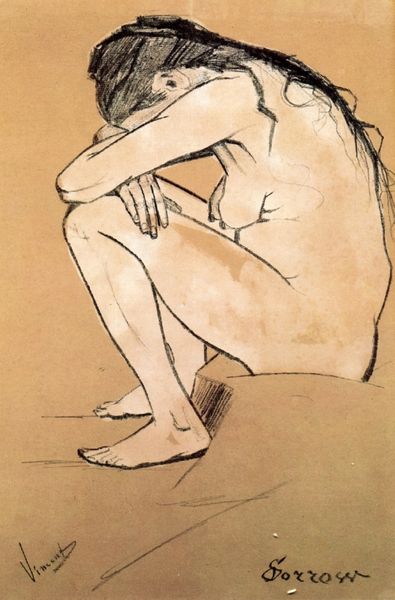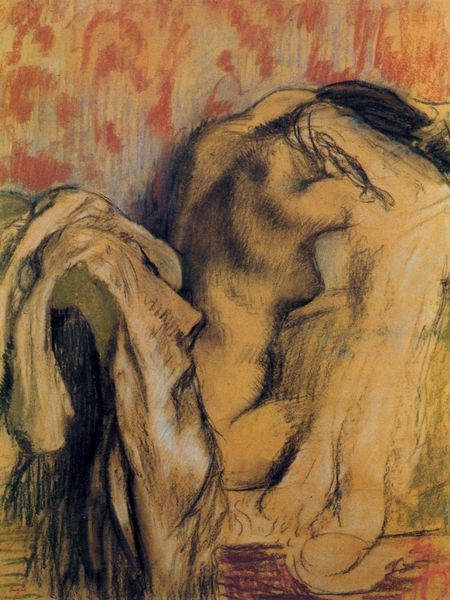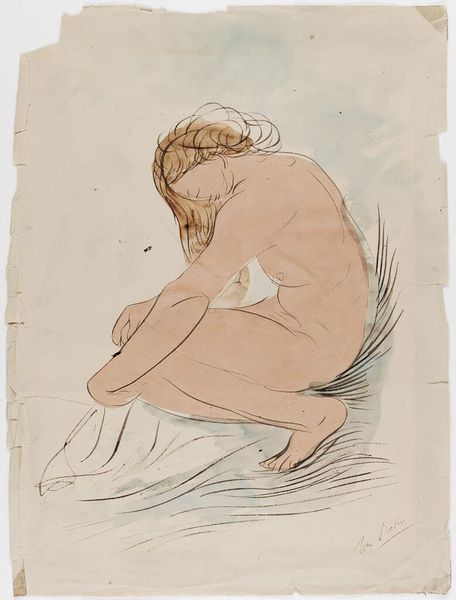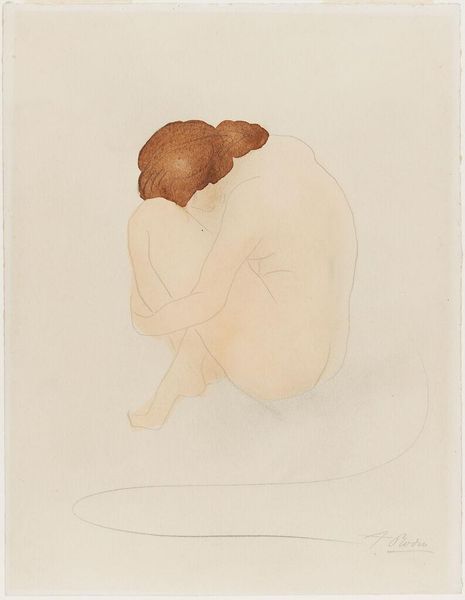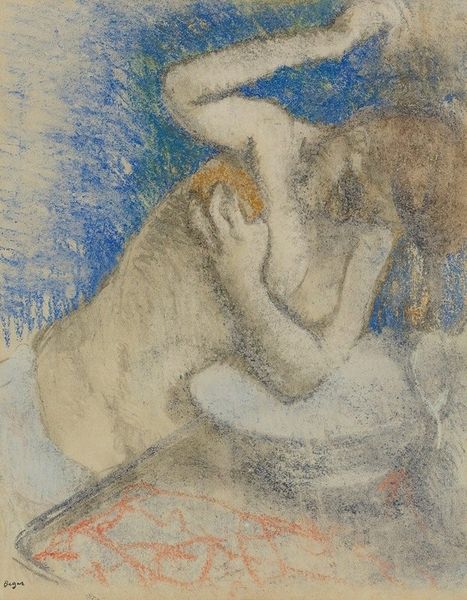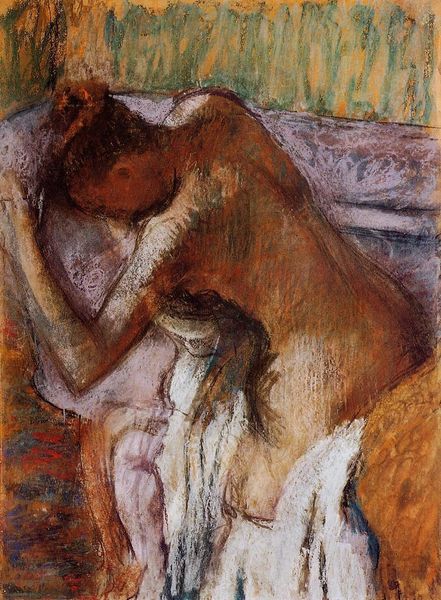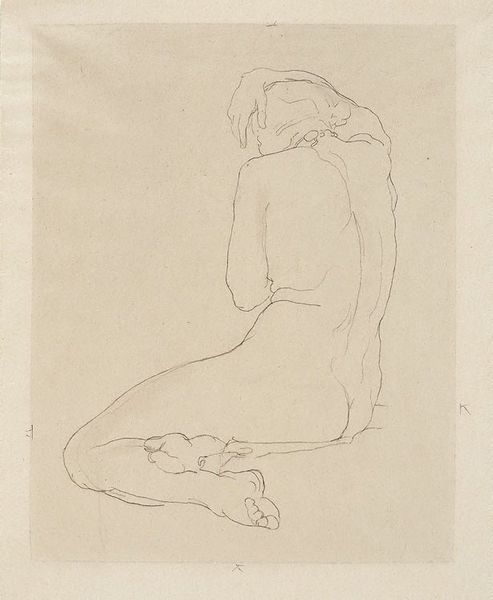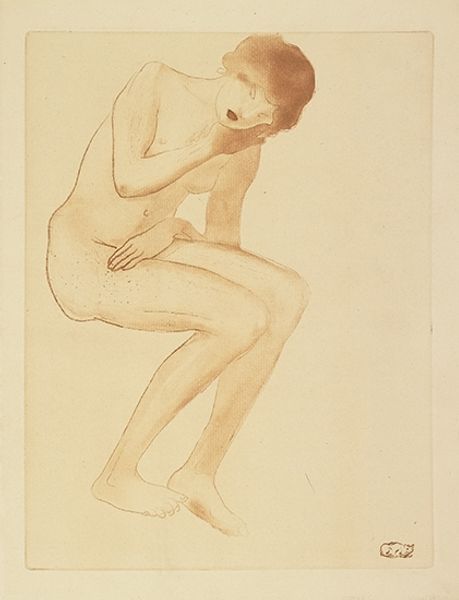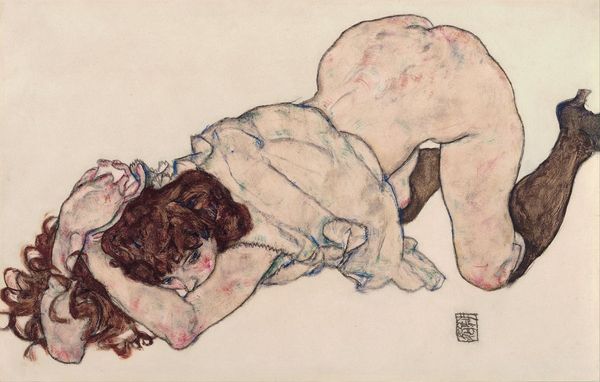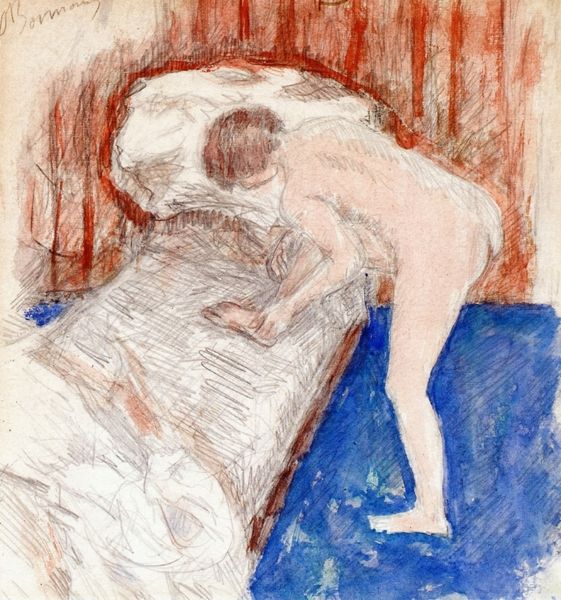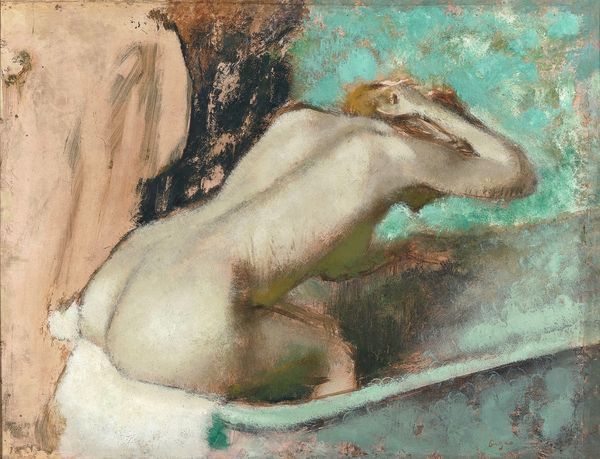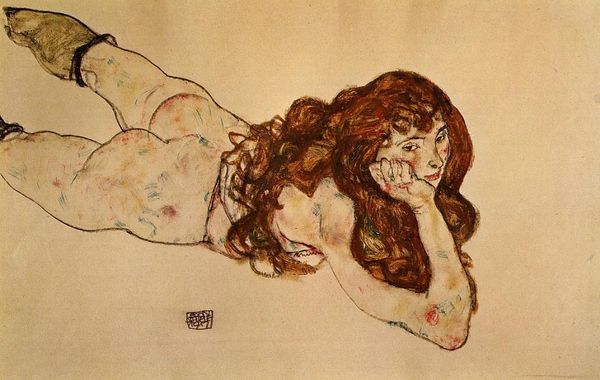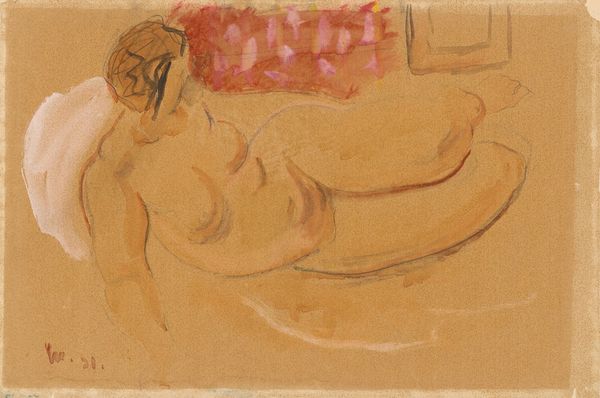
painting, watercolor
#
self-portrait
#
painting
#
figuration
#
watercolor
#
female-nude
#
expressionism
#
nude
Copyright: Public domain
Curator: Welcome to this exploration of Egon Schiele's "Seated Woman," created in 1913. It's currently held in a private collection, and executed in watercolor. What are your initial thoughts? Editor: There’s a pronounced sense of vulnerability, wouldn’t you say? A sort of collapsing inward… she seems to be shielding herself, almost fetal. The deep orange-red color seems to underline a suppressed fire. Curator: Yes, and look closely at the application of watercolor. Schiele's characteristic, restless line is very apparent. Consider how the minimal washes serve not to simply represent form, but rather, they activate the entire surface of the paper. This paper isn’t just a passive backdrop; it's integral to the artwork's overall affect. Editor: It is a curious depiction. The stark outlines really define her body, but simultaneously, she melts back into that fiery, symbolic "womb" as you say, this red cushion, dissolving some boundaries, perhaps suggesting fragility. Her head almost seems consumed by this internal space, away from the outer world, and perhaps a symbol of the internal mind and human experience. Curator: I'm thinking about the social conditions during that period in Vienna. Schiele often used inexpensive materials – paper, pencil, watercolor – reflecting perhaps the bohemian lifestyle of the Expressionists and perhaps responding to the materials they were using given social limitations or accessibility? He focuses less on illusionistic perfection and more on direct expression of his ideas using the most common elements around him. Editor: It speaks to his desire for freedom in representation. Note also the symbolic implications of such a withdrawn posture – the lack of eye contact suggesting isolation or introversion. The reddish, fiery backdrop, against the nude skin might signal desire, shame, even existential anxiety; the color carries such weight and tradition of complex symbols. Curator: Perhaps it underscores that tension between the individual and the forces pressing down in society at the time? The making mirrors a kind of artistic rebellion. Editor: A truly arresting piece. Seeing through these eyes has reminded me that art often reflects deeply internal conditions and beliefs, while external factors leave their mark as well. Curator: Absolutely. The interplay of materials and visual cues shows us that there's an intimate connection with the life that created this art, one both felt by the creator and reflected in what they did. It provides such a comprehensive idea, truly, of both internal states and outward experiences.
Comments
No comments
Be the first to comment and join the conversation on the ultimate creative platform.
